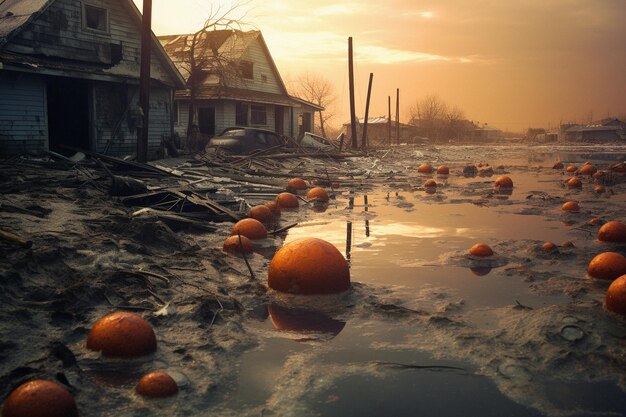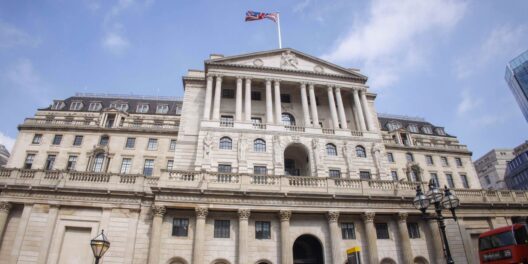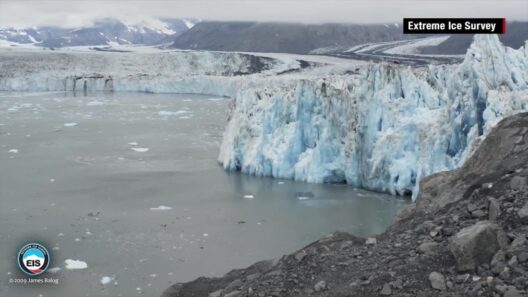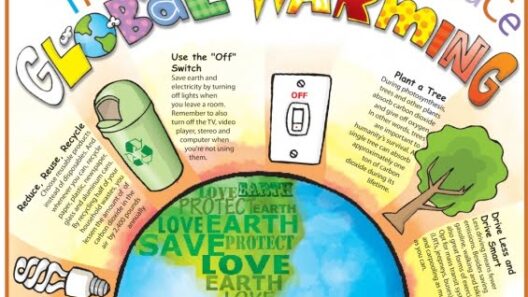Global warming is no longer a distant fear; it is an unmistakable reality that manifests in increasingly severe weather phenomena, including floods, fires, and hurricanes. This intricate web of environmental degradation directly correlates with the rise in greenhouse gas emissions, temperature fluctuations, and shifts in atmospheric patterns. Understanding the relationship between global warming and these destructive forces is imperative for fostering effective climate action.
In recent years, floods have become alarmingly prevalent. They can range from minor flash floods to catastrophic inundations that displace communities and devastate infrastructure. The connection between floods and global warming lies primarily in the increased quantity and intensity of precipitation events. As the atmosphere warms, it holds more moisture, which can lead to extreme downpours. According to climatologists, the frequency of heavy rainfall events is projected to rise, particularly in temperate regions and the tropics. This exacerbation of flooding incidents can be attributed to the increasing surface temperatures of oceans, which fuels the evaporation process.
Furthermore, rising sea levels—another consequence of global warming—intensify flood risks, especially in coastal areas. Melting polar ice and glaciers contribute to elevated sea levels, making coastlines more vulnerable to storm surges and tidal flooding. As cities grow and urbanize along these coastlines, the potential for economic losses increases exponentially. Therefore, combating global warming not only requires awareness of meteorological phenomena but also an understanding of land use and infrastructure development in vulnerable regions.
In tandem with floods, wildfires are experiencing an alarming surge across the globe. The incidences of these infernos are intricately linked to prolonged droughts, heatwaves, and the expansion of urban interfaces with natural landscapes. As temperatures soar—wherein many regions report record highs—vegetation dries out, rendering it highly flammable. This phenomenon creates a conducive environment for ignition, whether through natural occurrences like lightning strikes or human activities.
Moreover, the prolonged dry periods instigated by global warming lead to drastic alterations in ecosystems. Landscapes that once thrived are left parched and unable to sustain moisture, which further promotes fire conditions. Research indicates that regions such as California and Australia have witnessed a cyclical pattern of heightened wildfire activity correlated with drier years. The impact of these fires extends beyond immediate ecological destruction; they release significant amounts of carbon into the atmosphere, creating a feedback loop that exacerbates global warming. Such dynamics emphasize the need for effective land management and fire prevention strategies that address underlying climatic issues.
Hurricanes, too, have come to symbolize the dire consequences of climate change. As ocean temperatures rise, the energy that fuels these colossal storms becomes more abundant. Consequently, hurricanes are predicted to become more intense, with higher wind speeds and increased rainfall associated with them. Studies suggest that hurricanes are not just getting stronger; their paths are also changing, impacting regions that previously may not have been in their trajectory.
The relationship between hurricanes and global warming can clearly be seen in the historical data of storm patterns. For example, the Atlantic hurricane season has seen a noticeable uptick in activity since the early 2000s, marking a shift that aligns with rising ocean temperatures. These storms often bring catastrophic flooding and infrastructural damage when they make landfall, illustrating the compounded risks presented by an increasingly unstable climate.
All three weather phenomena—floods, fires, and hurricanes—also pose unique socio-economic challenges. Communities that are already marginalized often bear the brunt of these climatic events, highlighting the intersection of climate change and social inequality. Vulnerable populations may lack the resources for robust emergency preparedness or recovery efforts, leading to prolonged struggles in the aftermath of climactic events. The disparities in resilience and adaptation call for policy interventions that prioritize equity in climate action and aim to mitigate the impacts of global warming.
Mitigation strategies are inherently multifaceted and require coordinated efforts across governmental, non-governmental, and community levels. Investment in renewable energy, the promotion of sustainable land use practices, and the implementation of advanced technology for predicting weather patterns can substantially reduce the impacts of these disasters. Furthermore, fostering public awareness and education regarding the direct link between individual actions and global warming is vital for driving grassroots movements toward effective environmental stewardship.
In conclusion, the alarming increase in floods, fires, and hurricanes cannot be viewed in isolation, as they are intrinsically linked to the ongoing effects of global warming. Each phenomenon exacerbates the other, creating a cyclical pattern of destruction and environmental degradation. Addressing these challenges demands immediate action and comprehensive strategies aimed at both mitigation and adaptation. As the global climate continues to shift, prioritizing environmental justice and sustainable practices will be crucial in safeguarding communities and preserving ecological integrity for future generations.






